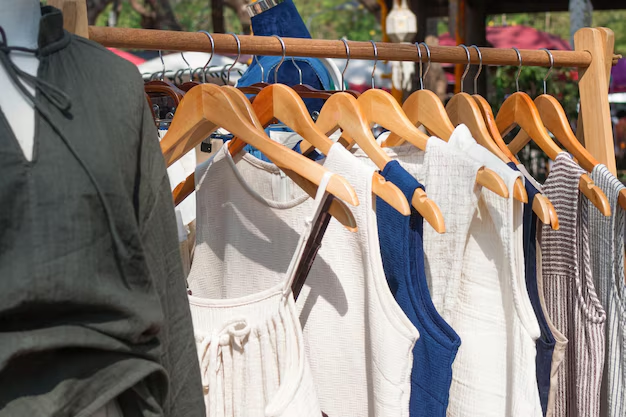Dress Sharp Without Breaking the Bank: The Thrift Shopper’s Guide to Style and Wardrobe Care
Fashion isn't just about keeping up with the latest trends—it's about expressing yourself, making smart choices, and yes, even saving money. For those who appreciate both individuality and budget-friendliness, thrift shopping presents a symphony of possibilities. From discovering unique pieces that have stories to tell, to adopting sustainable fashion practices and caring for your wardrobe, dressing well on a dime is not only possible but also rewarding.
The Allure of Thrift Shopping
For many, thrift shopping is like going on a treasure hunt. Thrift stores, consignment shops, and vintage boutiques are treasure troves of unique fashion finds. The clothes are not only affordable but often come from different eras and styles, allowing personal expression that’s less attainable in mainstream retail stores.
Why Choose Thrift Shopping?
- Affordability: Thrift shopping is one of the most economical ways to dress well. It allows fashion enthusiasts to purchase high-quality or designer clothing for a fraction of the original price.
- Sustainability: Opting for secondhand clothing is an eco-friendly choice. It reduces textile waste and curbs the demand for fast fashion production, which is resource-intensive.
- Uniqueness: Thrift shopping offers access to one-of-a-kind items that help you stand out from the crowd. Vintage finds add character to your wardrobe.
- Support Local Charities: Many thrift stores are run by charitable organizations, so your purchase often supports a good cause.
Strategies for Successful Thrift Shopping
- Know What You're Looking For: Have a mental (or actual) list of items you need. This keeps you focused and helps you avoid impulse purchases.
- Visit Regularly: Inventory at thrift stores changes often. Frequent visits will yield more opportunities to find great pieces.
- Inspect for Quality: Check for holes, stains, and wear. Small imperfections might be fixable, but be aware of the cost of potential repairs.
- Try It On: Sizes and fits can vary, especially with vintage items. A quick try-on can prevent regrets.
- Be Open-minded: Sometimes, unexpected items can become new staples.
Building a Functional Wardrobe on a Budget
Once you've collected an array of thrifted treasures, focus on organizing a functional wardrobe that simplifies your daily dressing decisions while keeping you stylish.
Curating Your Thrifted Wardrobe
Essentials First: Focus on basics that form the foundation of most outfits. Staples like solid tees, classic jeans, and neutral blazers never go out of style.
Mix and Match: Choose versatile pieces that can transition through various outfits and occasions.
Accessorize Wisely: Accessories can dramatically alter the look of an outfit. Scarves, belts, hats, and jewelry are often available at thrift stores and can provide that finishing touch.
Wardrobe Rotation: Be ready to rotate older or less-used items out as you introduce new ones. Donating or reselling them contributes to the fashion ecosystem.
Wardrobe Care Tips
Taking proper care of your clothes extends their lifespan, further saving you money and maintaining a sustainable approach to fashion.
- Follow Care Labels: Always adhere to the washing instructions to prevent damage.
- Hand Wash Delicates: Delicate fabrics, like silk and certain knits, last longer when hand washed.
- Proper Storage: Use quality hangers and separate items to prevent wrinkles and preserve shape.
- Mending and Altering: Basic sewing skills can help you fix minor damages. Tailored adjustments can make secondhand clothes fit like a glove.
- Seasonal Cleaning: Regular assessments and cleaning help maintain a fresh wardrobe.
Discovering Style Through Diversity
Thrift stores expose shoppers to a vast array of styles, from bohemian and preppy to vintage glam. By incorporating these into your wardrobe, you can expand your personal style without straying from budget constraints.
Exploring Different Fashion Genres
- Vintage Style: Integrate classic pieces with modern outfits for an eclectic mix.
- Minimalist: Embrace simplicity with clean lines and monochromatic themes.
- Bohemian Chic: Opt for flowy, earth-toned garments and natural fabrics.
- Retro: Channel the distinct vibes of different decades, such as the 70s or 90s.
This diverse exposure can foster a more defined and eclectic personal style.
Practical Tips for Thrift Success
Here’s a quick guide to help you thrift like a pro:
- 🕒 Timing Matters: Early morning on weekdays can yield the best finds.
- 🔍 Bring a Friend: An extra pair of eyes can be helpful and make the experience more fun.
- 📏 Measurements Matter: Arm yourself with knowledge of your measurements, not just your size.
- 👗 DIY Mindset: Slight imperfections or outdated styles can be revamped with a bit of creativity.
Conclusion: Embrace the Thrift Fashion Journey
Mastering fashion on a budget through thrift shopping and effective wardrobe care is not just a skill but an art. By incorporating thrift shopping into your style practice, you unlock endless possibilities to create a wardrobe that's simultaneously cost-effective and highly distinctive. Remember, fashion is a form of self-expression, and through conscious choices, you can embody style and sustainability seamlessly.
Embark on your thrift shopping journey with an open heart and keen eye, and watch as your wardrobe transforms into a collective of affordable treasures. Whether you are looking to define your personal style or simply embrace a more cost-effective and eco-friendly approach to fashion, thrift shopping offers both the thrill of discovery and the joy of saving—an unbeatable combination for looking sharp without breaking the bank.

Related Topics
- A Comprehensive Guide To Community Cooperative Childcare: A Grassroots Solution
- A Guide To Online Second-Hand Shopping: Platforms, Tips, And Tricks
- Affordable After-School Programs And Clubs: A Complete Guide
- Affordable Group Therapy: Benefits And How To Find
- Affordable Natural Therapies For Mental Well-being
- Avoiding Financial Scams And Pitfalls: A Comprehensive Guide
- Backpacking On a Budget: A Guide For The Minimalist Traveler
- Beginners Guide To Thrifting: Stretching Your Dollar Further
- Beyond Clothing: Thrifty Finds For Home And Kitchen
- Budget-friendly Garden Start-ups: From Seeds To Harvest